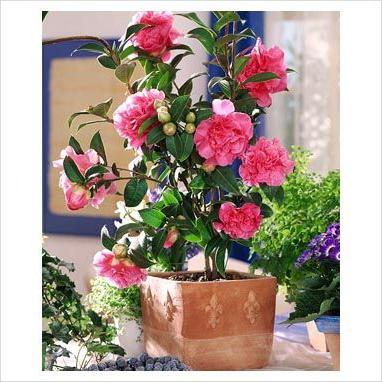Hibiscus. Home care
Hibiscus belongs to the family of mallow. In the vastness of our country, he came from China, India and tropical Africa.
Hibiscus has over several hundred varieties. In our country is very popular its variety, which is called a Chinese rose or rosana Chinese.
Hibiscus is considered very beautiful, widelya common indoor plant. This is an evergreen shrub whose size is more like the size of a tree. Hibiscus has bright green leaves with an oval shape and teeth at the edges. The flower of hibiscus can reach 15 centimeters in diameter, and its color palette is wide enough. So, the flowers of the Chinese rose can be red, pink, orange, yellow or white.
If you want to have hibiscus in your apartment, leaving at home for him will require you to take a decent space for him. The plant reaches a rather large size.
Hibiscus. Care, reproduction
Because the tropical climate is a true environmentlife of the Chinese rose, it will be very useful if, in a similar environment created in your home, your hibiscus flower will also live. Care of him implies, among other things, abundant lighting. If you can not provide it, it can disappear. Also, in the spring-summer period, hibiscus should be abundant and often watered. But if the window is winter, watering should be moderate. Try to ensure that the land is not parched, as it can also ruin your hibiscus.
Care at home will require youconstant adherence to a moderate temperature regime. You will have to make sure that there are no sharp temperature changes in the room where the rose is growing. In winter, the temperature should be at least twelve degrees Celsius. If it begins to decrease, it is necessary to reduce the number of irrigation. If the feature of your room is the presence of dry and warm air, in this case, the leaves of the Chinese rose should be sprayed with water.
If your flower is 5 or 6 years old, then you needtake care of his transplant. This must be done every year. And if your hibiscus is mature, then it will be enough to transplant it once every 3 or 4 years. The need for transplantation can be determined by the way the roots have covered themselves with the clod of earth into which the rose is planted. To transplant a rose is necessary in the beginning of spring, in clayey-sod, leaf and humus earth. The proportion is as follows: two parts - one part - one part. Also, in the ground you can add sand and bird droppings (in small amounts). In order to stimulate the growth of young shoots, on which the buds will grow, you can cut off some of the roots during transplantation.
At the end of the transplant procedure, trim the branchesso that they are reduced by one-third of their original length. This will promote the growth of young shoots, and later will form the crown and will have a favorable effect on how your hibiscus will blossom. Care at home also requires such a transplant scheme. If you want to see your plant flowering in autumn or winter, then transplant and trim it in May. Until then, it should be kept untouched and seldom watered. After the transplant and circumcision, the usual care is used. And after the arrival of July, it is necessary to further trim, thanks to which, with the advent of autumn, flower buds will appear. And then the blossom of hibiscus will occur.
If your hibiscus does not show any signslife, do not worry, after three months the rose will again wake up and make you happy with its green leaves and bright flowers. In such a state, simply water the rose no more than once a week. Also loosen the soil in which hibiscus grows. Care at home during the period of growth and flowering roses should occur with adequate feeding. This should be done no more than once a week with the help of organic and mineral fertilizers, alternating their use.
</ p>>






